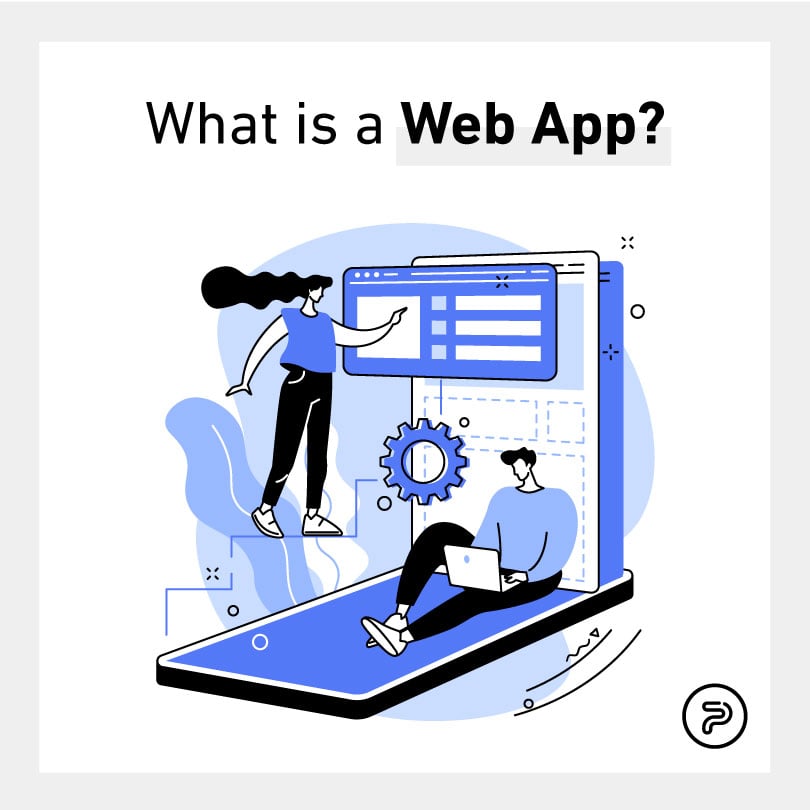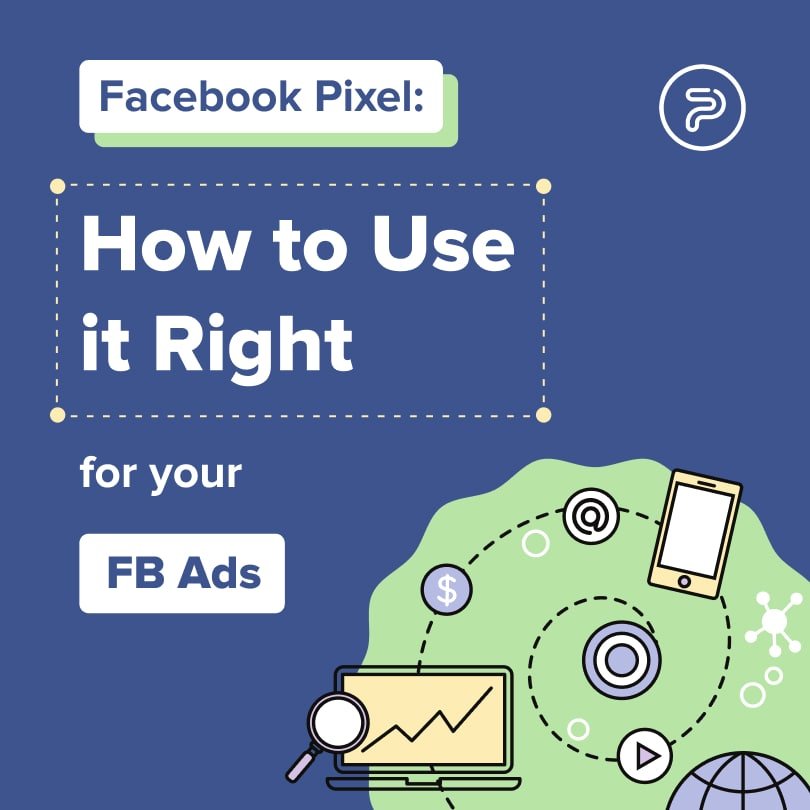Today, almost every one of us flocks to the internet to surf, look for info, purchase stuff, for professional purposes, and a myriad of other reasons. It has become a true stronghold of functions and roles, let that be entertainment, business, research, education… you name it, the internet has probably got it.
And even though we use this digital gift day in and day out, not all of us understand how stuff actually works in the digital realm. Probably, we all heard about terms such as website, browser, and web application services, but most of us pretty much struggle to give an actual definition when it comes to explaining what these things are and how they work.
As such, in this article we will explore the term “web app” and everything there’s to know about it.
What is a Web App: The Definition
In short, a web app (or application) can be defined as an application program that is usually being stored on a remote server and delivered through the internet with the help of a browser interface. Usually, web services are web apps by definition, and oftentimes, websites may also contain web apps. Some experts usually say that any component on a website that is able to perform a specific function for a user can qualify as a web app.
By nature, these applications can serve a wide variety of purposes and can be tailored to any needs, let those be for business or individual purposes. Some of the most popular web apps include simple things like online calculators, webmail functions, and more intricate features, like e-Commerce shops. Also, some of these functions might be accessed only from a specific browser, while most are universal.
What is a Web App and How Do They Work?
In order to use them, these apps don’t need to be downloaded, rather, you access them through a network, more specifically, a web browser, such as Safari, Google Chrome, or Mozilla Firefox.
For these apps to operate, they need an application server, a web server, and a database. The web servers are responsible for managing requests from clients, the application server then completes the task requested. Lastly, databases usually store the needed info.
In most cases, these web applications have shorter development cycles and a smaller developer team is enough to hammer out such a project. Most of these apps are written in SCC, JavaScript, or HTML5. Usually, client-side programming utilizes these languages ad they also help to create the front-end of the application. Server-side programming, on the other hand, is usually performed to create the necessary scripts the web page will need to use. Server-side programming languages mostly include Ruby, Java, or Python.
Difference Between A Website And A Web App
Most of the time, people also struggle to differentiate between web apps and websites. It’s not uncommon to mess up the two, so in this section, we will point out the main differences that separate them.

Website
Usually, experts define a website as a group of interlinked web pages that are accessible from all around the world and share the same domain name. Websites aren’t reserved for a typical site owner type, they can be run by businesses, organizations, and individuals as well and they can suit a variety of different purposes. A great (and probably the simplest) example of a website would be a blog.
Websites are accessible through a network via an IP address, like the internet or a local area network.
Oftentimes, they are hosted on a single server, however, they can also be hosted on several at the same time.
Web app
These are programs or pieces of software that users access using a web browser. Unlike with mobile apps, there’s no specific SDK used for development.
In most cases, web app development is an actual part of the website. The app itself can’t be considered as a complete website but usually carries out more complex and intricate functions than websites.
As such, it’s also an “active” feature on most sites. Something that the end-user is able to manipulate. In most cases, with simple websites, users are only restricted to read the page content and are mostly unable to interact with the site in any other way.
What Are The Benefits of Web Applications?
As already stated above, these apps have a myriad of different functions and they can benefit a website/site owner/business in several ways.
- Users don’t need to install them.
- The app can be used by multiple users at the same time.
- They can be accessed through several devices (desktop, laptop, mobile), and browsers.
- They can potentially reduce piracy issues with subscription-based web apps (SaaS).
- They can also potentially reduce costs both for businesses and users because there’s less required maintenance and support by the site owners and generally, lower requirements for the end user’s computer.
Web App. Vs Other App Types
Chances are, you’ve also heard about different app types of the years. Terminology like native apps, hybrid apps, and all that jazz. In this section, we will focus on each one for a bit.
Mobile apps
These applications are built with specific platforms in mind, most commonly iOS and Android. You usually have to download and install them using an app store service and oftentimes, the application will have to access your camera, GPS, and other functions in order to run. They exist and function on the device itself. Great examples of these apps include Snapchat, Facebook Messenger, Instagram, Google Maps, and a myriad of other apps, such as mobile games. As you can see, the biggest difference between native mobile apps is the fact that they function on a dedicated device. Web apps aren’t native and can be accessed via a simple browser from any device without the need of having to download or install them. Web apps are also made with device responsiveness in mind, which often causes the most confusion in the web app vs. mobile app debate.

To be more precise, most web apps are able to adapt to the requirements and dimensions of the device they are accessed on. When you access a web app via a browser on mobile, chances are, the interface will look pretty similar to the dedicated mobile app version of the program. A good example of this would be platforms like Yelp or Facebook.
Hybrid apps
As you might have guessed, these are mobile app types that combine the elements of native mobile apps and web applications. You can download them and install them on your device or you can simply run them through your web browser. They are usually built with a backend code and a native shell. The latter makes it to be downloadable.
When it comes to these app types, experts agree that they can bring quite a few advantages to the table. These include:
- Increased developer productivity: These apps can be created with common web technologies across both the backend and the frontend. This can reduce the required development time greatly.
- Internal API access: these apps can utilize device features like push notifications and location tracking (these are usually lacking features in web apps).
- Available cross-platform: Because of the common codebase, they can run on both iOS and Android systems.
- Better discoverability and cheaper costs: It’s needless to say that these apps are simpler and have fewer costs upfront when compared to native apps and they can still be available in both iOS and Android app stores.
- On the other hand, these same app types also suffer from a few minor disadvantages.
- User experience can be inconsistent: This is mostly due to the fact that the overall app performance is partly dependent on the internet speed of the user’s device, UX can become inconsistent.
- Time-consuming learning curve: As these apps don’t rely only on CSS or JavaScript to run, they need a bit more juice under the hood. More precisely, they require to be integrated with dedicated hybrid web app development frameworks such as Cordova, Ionic, or React Native. The “problem is”, all these frameworks take some time to learn how to use and they might require a longer development cycle from “fresh” development teams who don’t really have any experiences with these platforms yet.
- Progressive applications: Often referred to as PWA, these applications types are pretty similar to hybrids, presenting a blend between web and native apps but with a few distinctive differences.
For starters, in most cases, you can’t get them from app stores, they are easy to customize and oftentimes offer better speed than hybrid apps.
Like native web apps, they can also work offline and load rather quickly.
Putting It All Together
Nowadays, web apps are the bread and butter of the internet as they enable users to engage with the online content more, enabling them to play a more active role in the digital world, pushing them out of the spectator seat. Web apps also did a great service for businesses as they improved communication with users, overall user experience, and enabled businesses to create virtual shops opening a myriad of different possibilities, and speeding up process purchases in the process. Web apps simply make the internet more exciting and more fun.
For businesses, they pretty much qualify as a “must-feature” to stay competitive in the ever-changing digital landscape.




